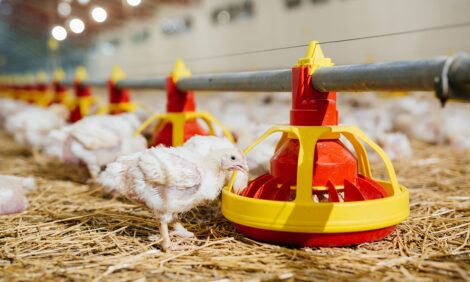



Infectious bronchitis DMV/1639 continues to affect Canadian poultry
Updates on infectious bronchitis, antimicrobial resistance and E. coli in CanadaAt the 2024 Western Poultry Disease Conference, Canadian veterinarians and researchers presented updated information on poultry diseases in the country.
Infectious bronchitis virus genotyping
Davor Ojkic and colleagues at the University of Guelph noted that between 2014 and 2022 infectious bronchitis virus (IBV) was detected in 5,263 samples and partial nucleotide sequences of the IBV spike (S) protein gene were determined for 1,501 samples.
Based on their spike gene sequence identities, Canadian IBVs could be divided into 5 major groups:
- variant viruses related to strains described in the US
- vaccine-like or classic viruses
- exotic, non-Canadian, non-US viruses
- ”domestic” Canadian variants
- “untyped/not-identified” IBVs showing less than 89% identity to other IBV strains
Outbreaks with 4/91, California 1734/04, and DMV/1639/11 -like IBVs were often associated with more severe disease in all chicken commodity groups. With each strain, the severity of infection and number of affected flocks increased.
Multiple IBV strains overlapped in their emergence, peaked and regressed, but the introduction of DMV/1639/11 has resulted in a continuous field challenge, Ojkic concluded.
Antimicrobial use and resistance
The status of antimicrobial use and resistance (AMR) in broiler chickens, turkeys and laying hens in Canada in 2022 was presented by Agnes Agunos and fellow researchers at the Public Health Agency of Canada, in Guelph, Saskatoon and St. Hyacinthe.
Antimicrobial resistance is an indicator of zoonotic bacteria and antimicrobial use in broiler chickens, layers, and turkeys in relation to an industrywide stewardship action.
In 2022, antimicrobial use quantity (mg/kg) has decreased in both broiler chickens and turkeys in parallel to the drop in resistance observed, indicative that voluntary and regulatory actions to contain AMR are working.
Analysis of various AMR measurements including resistance to important antimicrobials such as third generation cephalosporins dropped in Escherichia coli and Salmonella. A composite measurement of resistance to three or more antimicrobial classes also dropped in E. coli and Salmonella.
However, resistance to fluoroquinolones in Campylobacter across the three poultry species remained stable. Nalidixic acid resistant Salmonella continued to emerge.
Rapid diagnosis of E. coli and reovirus
Asha Ranaraja and colleagues at the Department of Veterinary Pathology, University of Saskatchewan, as well as colleagues from universities and laboratories across Canada, explained that infectious diseases cause significant economic losses to the Canadian poultry industry. The inability to diagnose diseases at early onset remains a challenge leading to economic losses and affecting the welfare of animals. Metabolic biomarkers can be used as an early warning system considering pathogen-induced metabolic changes.
In human medicine, metabolomic studies are common while in veterinary medicine they are still in their infancy. The objective of this study was to identify the metabolomic landscape of broiler chickens following infection with E. coli and avian reoviruses.
The serum metabolomic profile of chickens 24 hours following infection with E. coli and avian reovirus was analyzed using liquid chromatography-mass spectrometry.
A clear separation of metabolites was observed between infected and uninfected birds, particularly the downregulation of the purine metabolism pathway. This is likely associated with energy metabolism and signaling during cellular stress. These metabolites are promising biomarkers for early detection of E. coli and reoviral infection in broiler chickens and can assist in implementing early interventions to minimize economic losses.









